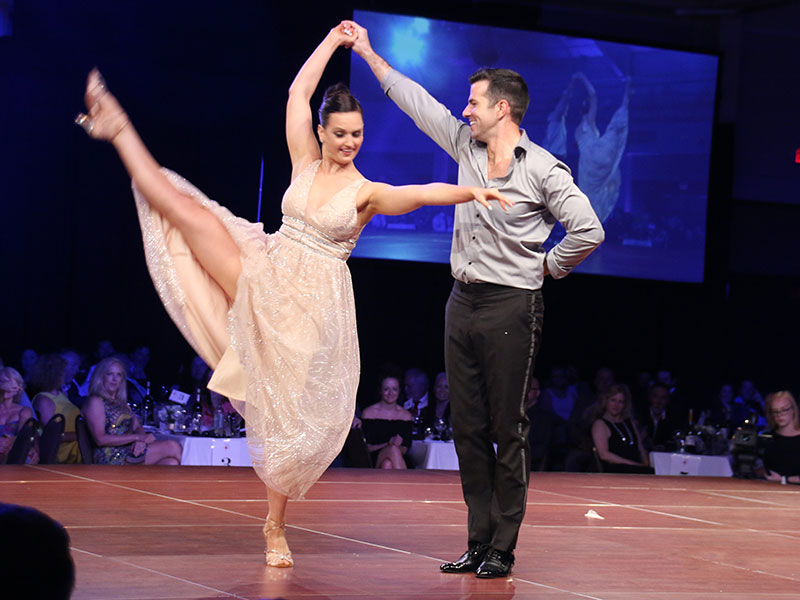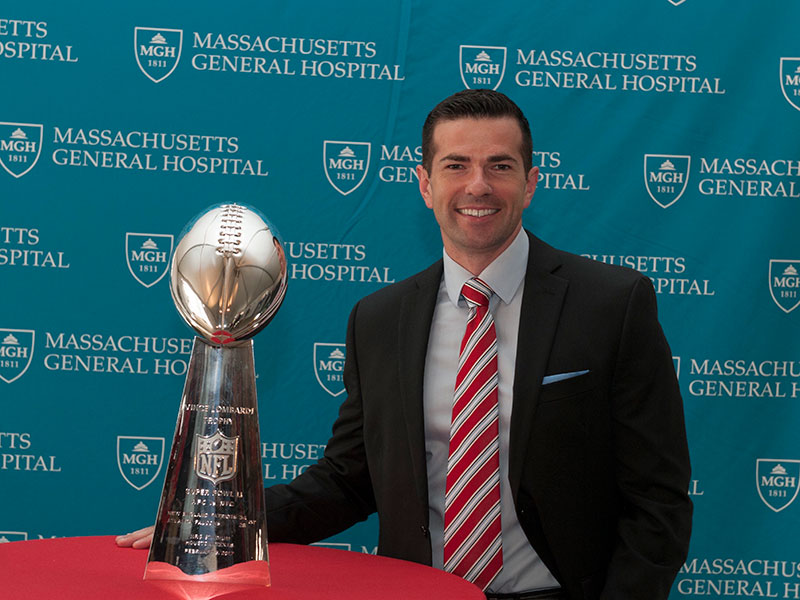University of South Dakota team physician Dr. Nathan Skelley grew up in Joplin, Missouri, and has been around doctors and health care his whole life.
Ultimately this Sanford Health doctor’s interest in sports medicine brought him to South Dakota, though that assessment skips over quite a bit of biographical information most would find intriguing.
To start with, the Coyotes’ new team surgeon comes by way of some of the country’s most respected schools and training institutions. He completed his undergraduate education at Cornell University in New York and went to medical school at Johns Hopkins University in Maryland.
It is also interesting to note that his father is an oncologist, his grandfather was a surgeon and his mother is a retired cardiac nurse specialist who now writes books for children and young adults.
Dr. Skelley also has a black belt in Sho-Tae-Ryu, a form of karate, and his first job was teaching martial arts. He also enjoys sailing and scuba diving, and most recently took up ballroom dance. As such he is part of a very short list of orthopedic surgeons in this country who have participated in ballroom dancing contests.
A few years ago, he competed in “Dancing with the Missouri Stars” to raise funds for the Missouri Contemporary Ballet.
“Ballroom dancing is actually very surgical,” he said with a laugh, though he wasn’t kidding. “You have to learn the synchronization with the music, the body movements, being able to work with someone else … it’s a great activity and I’d recommend it to anyone who is interested in getting involved in it.”
Side note: His ballroom partner in the fundraising endeavor was Nicole Bell, a professionally trained ballet dancer who has since become his partner in real life.
“We loved the experience so much we’ve been together ever since,” he said.

Photo courtesy of Nathan Skelley
Rapport between doctor and athlete
More to the point in his new role as an orthopedic surgeon for University of South Dakota sports, the dynamics involved in the relationship between a doctor and an athlete are at the core of why he does what he does.
“Taking care of student-athletes involves a great amount of evidenced-based science but also the art of medicine,” Dr. Skelley said. “It’s not really something that you can learn in a textbook or on a video or by taking a course or going to a symposium. It’s the ability to connect with someone in a short of amount of time, learn what their goals are after they sustain an injury, and then get them back to that high level of performance.”
Dr. Skelley’s introduction to USD athletics took place shortly before the Coyote men’s and women’s basketball teams were playing in the Summit League basketball tournament in Sioux Falls last March. Nearly half a year later, it remains the last significant major college sporting event taking place in the area.
Needless to say, the coronavirus has left a mark on college sports and the people who play them. It has also presented coaches, administrators and health care providers with unprecedented challenges. In this case that translates to questions that are difficult to answer.
“We can learn lessons from previous pandemics but the current situation is unique,” Dr. Skelley said. “We as an entire health care organization and an entire community have had to adjust our thought process to look out for our family members and friends and neighbors in ways we haven’t in the past.”
As a doctor who often communicates with young people, straight talk about the coronavirus is crucial during this time of uncertainty.
“It can be difficult sometimes to separate the politics from the science,” he said. “As health care professionals, our top priority is to care for the patients and athletes. We need to filter through the confusion and make sure we’re giving people the best information and the best plans to keep everyone safe.”
A super effort
After med school, Dr. Skelley completed his surgical residency at Washington University in St. Louis and Barnes-Jewish Hospital. He then performed his sports medicine fellowship at Harvard Medical School and Massachusetts General Hospital.
While there, he worked with the Boston Red Sox, the Boston Bruins and the New England Patriots. It was the 2016-17 season for the Pats, which ended with a 34-28 Super Bowl win for the team.
Like all other moving parts connected to this terrifically successful NFL franchise, he discovered there is a specific way things work to make the entire franchise successful.
“I learned a lot of great lessons from the coaches, staff, and athletes in Boston. Everyone has a specific job and a specific lane that they work in,” Dr. Skelley said. “If we all do our job in our own lane, then we all advance as a team. We can all be very, very successful. If you get outside your lane — and if people don’t communicate well — then confusion and misinformation develop and progress becomes more difficult.”
In other words, Dr. Skelley was not suggesting plays to Bill Belichick during his time with the team, nor was the renowned head coach assisting in surgery. It’s the same kind of optimal “do-your-job” dynamic he’d like to play a part in sustaining and elevating at USD.
“We have a phenomenal team in Vermillion — from the administration with David Herbster and his leadership to the coaches and the other doctors and the athletic training staff,” he said. “Everybody communicates really well. That’s fortunate now given the COVID situation. We’ve all had to work a little harder to be on the same page and send the same messages and establish the same goals for our athletes and community.”
The center of the wheel
Within a college athletic program, concern for athletes’ well-being starts with the athletes themselves, but then progresses to those within the Coyotes’ Sanford health care provider network who are around the individuals every day. Hence the need for clear communication.
“When you take on his role with athletic teams you become part of the family yourself,” said Bruce Fischbach, who is USD’s assistant athletic director for sports medicine and a longtime athletic trainer at the school. “Dr. Skelley is an impressive guy based on his credentials but he’s also down-to-earth. He can talk to us and he can relate to our student-athletes and their families.”
Dr. Skelley refers to Fischbach’s 10-person athletic training staff at USD as “the center of the medical wheel” because they are on the front line with the athletes and help coordinate and direct athlete care. Important spokes on the wheel include his Sanford Health colleagues Dr. Stephen Foley, Dr. Donella Herman and fellow surgeon Dr. Thomas Flesher, all of whom also work with Coyote athletes.
“It’s a great medical team at USD,” Dr. Skelley said. “They’ve been very good about helping me adjust to a new system, in a new environment and I am honored to work with them and join the team.”
University officials got the chance to meet with Dr. Skelley during the interview process. From USD’s standpoint, it was comforting to know they would be working with someone whose strengths go beyond clinical qualifications.
“Right away he struck me as someone who is very engaging,” Herbster said. “He’s an extremely smart guy who doesn’t make the person he’s talking to feel dumb. Dr. Skelley has a passion for sports medicine. I see him as a lifelong learner. He’s going to be on the cutting edge. He’s someone who is going to do the research in every situation.”
What we look for in our doctors
When Herbster’s daughter, Kasey, a soccer player at Concordia University, St. Paul, had problems with her knee, Herbster sought out Dr. Skelley to take a look. It’s not like the athletic director felt compelled to make a gesture of support to an orthopedic surgeon with a medical school degree from Johns Hopkins, but in this case, it qualified.
“It’s what we look for in our coaches,” Herbster said. “One of the last boxes I check is ‘Would I want you to coach my child?’ To me that last box for a team doctor is ‘Would I want you to care for my child?’ And to me, the answer was ‘absolutely.’”
Dr. Skelley’s bedside manner developed from growing up listening to stories of his parents and old-time doctoring from his grandfather, Dr. Paul Skelley, who interrupted his surgical residency in Iowa City to volunteer for World War II. He went on to a long career as a general surgeon in Iowa.
In that era, particularly as it applied to rural areas, the role of “general surgeon” included performing a lot of orthopedic procedures that would now be assigned to more specialized physicians. As such, Dr. Nathan Skelley’s conversations with Dr. Paul Skelley included accounts of a diverse collection of surgeries.
Put another way, hearing all those stories now would take a group of grandfathers.
“I don’t think the rest of the people in those dinner conversations always appreciated it but I was fascinated by it,” Dr. Skelley said. “It seemed like there was an artistic quality to doing orthopedic procedures. The mathematics and geometry of the procedures were beautiful. It was an amazing concept to take someone with a fractured bone or torn tissue and get them walking or running again, or playing their favorite sport again.”
That fascination has never left him.
“I consider my role in improving an athlete’s quality of life a great honor,” he said. “It’s a hard thing to quantify at times because every athlete is different and has different goals and objectives but whatever those goals are, it’s very rewarding to be able to help them on that journey and get them back in the game when an injury or orthopedic problem gets in the way of their success.”
Learn more
…
Posted In Basketball, Orthopedics, Physicians and APPs, Sanford Stories, Specialty Care, Sports Medicine
